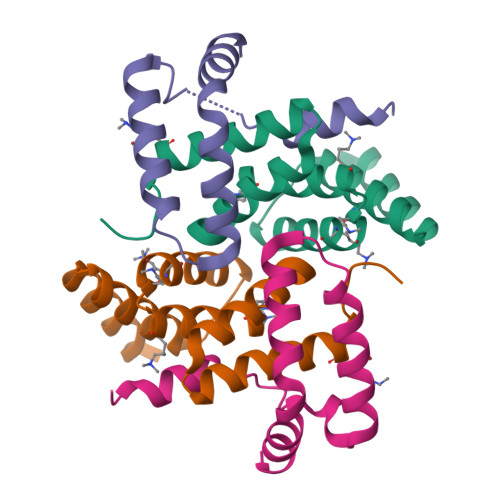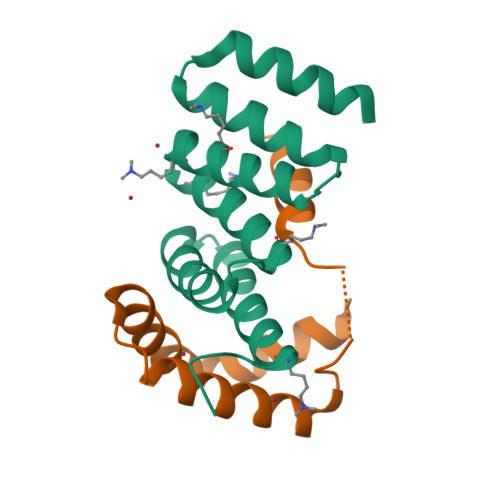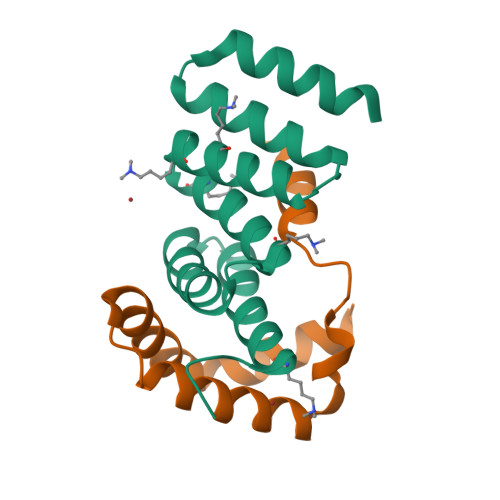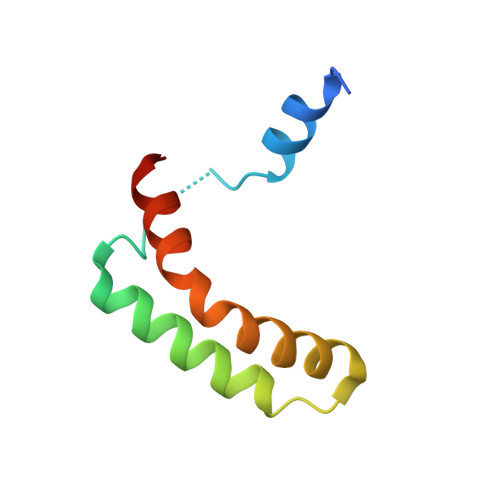The type III secretion chaperone SctY may shield the hydrophobic export gate-binding C-terminus of its substrate SctX.
Gilzer, D., Kowal, J.L., Flottmann, F., Niemann, H.H.(2023) Acta Crystallogr D Struct Biol 79: 508-517
- PubMed: 37204817
- DOI: https://doi.org/10.1107/S2059798323003248
- Primary Citation of Related Structures:
8ARA, 8ARB, 8ARC - PubMed Abstract:
Gram-negative bacteria such as Aeromonas and Yersinia spp. have developed mechanisms to inhibit the immune defense of their host. Effector proteins are directly injected into the host cytoplasm from the bacterial cytosol via type III secretion systems (T3SSs), where they modulate the cytoskeleton and signaling of the cell. Assembly of, and secretion via, T3SSs is tightly regulated by a number of bacterial proteins, including SctX (AscX in Aeromonas), the secretion of which is essential for T3SS function. Here, crystal structures of AscX in complex with SctY chaperones from Yersinia or Photorhabdus spp. carrying homologous T3SSs are described. There are crystal pathologies in all cases, with one crystal form diffracting anisotropically and the other two exhibiting strong pseudotranslation. The new structures reveal that the positioning of the substrate is very similar on different chaperones. However, the two C-terminal SctX helices that cap the N-terminal tetratricopeptide repeat of SctY shift and tilt depending on the identity of the chaperone. Moreover, the C-terminus of the α3 helix of AscX exhibits an unprecedented kink in two of the structures. In previous structures, the C-terminus of SctX protrudes beyond the chaperone as a straight helix: a conformation that is required for binding to the nonameric export gate SctV but that is unfavorable for binary SctX-SctY complexes due to the hydrophobicity of helix α3 of SctX. A kink in helix α3 may allow the chaperone to shield the hydrophobic C-terminus of SctX in solution.
Organizational Affiliation:
Department of Chemistry, Bielefeld University, Universitaetsstrasse 25, 33615 Bielefeld, Germany.






















